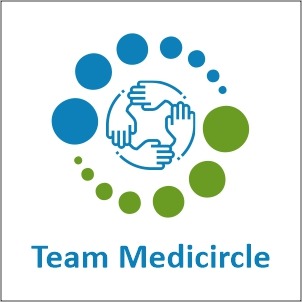Pictorial health warnings on all tobacco products are a proven and cost-effective way to prevent tobacco use among children and young people, encourage tobacco users to quit and increase awareness of deadly diseases caused by tobacco. That is why size and pictorial graphics matter because pictures say a thousand words. Nepal government decided this week to go for the largest pictorial health warnings on all tobacco products worldwide (100% on the front and 100% on the back packaging).
“Nepal has set a global benchmark by adopting 100% pictorial health warnings on tobacco packaging. This policy is a powerful tool to prevent smoking among youth and children, encourage tobacco users to quit, and raise public awareness about the dangers of tobacco use. It is a highly cost-effective intervention that not only saves lives and reduces healthcare costs but also helps to de-normalise tobacco in our communities. This remarkable achievement is a testament to the strong political commitment and timely actions of the Ministry of Health and Population, Nepal,” said Dr Tara Singh Bam, Asia Pacific Director (Tobacco Control) Vital Strategies.
The global tobacco treaty (formally called the World Health Organization Framework Convention on Tobacco Control or WHO FCTC) Article 11 also calls upon governments to implement strong pictorial health warnings and help save lives from deadly tobacco. WHO FCTC is ratified by Nepal along with over 180 countries worldwide.
The Ministry of Health and Population, Government of Nepal amended the 2014 Directive on Printing Warning Messages and Pictures on Boxes, Packets, Wrappers, Cartons, Parcels, and Packaging Materials of Tobacco Products. The new Directives increase the size of pictorial health warnings from 90% to 100% and mandates clear, visible warning messages with colourful images of the harmful effects of tobacco consumption covering the entire outer (front and back) surface of packaging in the Nepali language, set to take effect on 17th August 2025.
According to “Cigarette Package Health Warnings: International Status Report” published by Canadian Cancer Society in October 2023, Nepal was earlier ranked at 4th position with regards to the size of pictorial health warnings globally back then. Nepal had laws to display 90% warnings on the front as well as the back packaging back then (now it is 100% on front and back both of all tobacco packaging). Timor-Leste had the largest pictorial warnings back then with 85% area on the front packaging displaying the warning and 100% on the back of the packaging with the warnings. Turkey also had the same size warnings as Timor-Leste. Maldives, Vanuatu, Benin had similar policies as of Nepal back then. Now, with 100% back and front packaging to display pictorial health warnings in Nepal, it is indeed a strongest possible implementation of lifesaving and proven tobacco control approach.
All countries must implement largest and strongest pictorial health warnings and all other evidence-based measures enshrined in the WHO FCTC and WHO MPOWER package to save lives and hold tobacco industry accountable for the harm they have caused to human life and wellbeing as well as our planet.
Only 70 months left to deliver on SDGs
Tobacco kills over 8 million people every year worldwide. Each of the disease and death caused by tobacco could have been averted. Governments globally have promised to reduce the preventable burden of diseases by one-third by 2030 (for which tobacco is a major risk factor) such as world’s biggest killer disease (cardiovascular diseases or heart disease and stroke), cancers, diabetes, chronic respiratory diseases, among others. Tobacco also ups the risk of TB manifold. Tobacco-caused epidemic bleeds global economy with US$ 1.4 trillion every year – year after year.
#EndTobacco is a human rights imperative and a critical cog-in-the-wheel to accelerate progress on other SDGs.
Table 1 illustrates the design of pictorial and textual health warnings on tobacco packaging
|
Type of tobacco products |
Required pictorial health warnings display on tobacco pack |
Required text warnings display on tobacco packs |
|
Cigarettes pack |
- Eighty percent (80%) of the total principal display area (front and back) of cigarette boxes, packets, and wrappers must be printed pictorial health warnings.
|
- Twenty percent (20%) of the total principal display area (front and back) on the top part of cigarette box, packet and wrapper must be printed text warnings
|
|
Cigarette Manufacturer should print five graphic colour pictures and warning messages distributing the pictures equally in every batch, 20% of each kind, among total cigarette boxes, packets and wrappers. |
||
|
Chewing tobacco |
- The central sixty percent (60%) of the total principal display area (front and back) of chewing tobacco (Khaini) boxes, packets, and wrappers must be printed pictorial health warnings. |
- Twenty percent (20%) of the total principal display area (front and back) on the top part of chewing tobacco (Khaini) box, packet and wrapper must be printed text warnings - Twenty percent (20%) of the total principal display area (front and back) on the lower part of chewing tobacco (Khaini) box, packet and wrapper must be printed text warnings |
|
Chewing tobacco Manufacturer should print two graphic colour pictures and warning messages distributing the pictures equally in every batch, 50% of each kind, among total chewing tobacco, tobacco and gutkha boxes, packets and wrappers. |
||
|
Bidi |
- Eighty percent (80%) of the total principal display area (front and back) of bidi boxes, packets, and wrappers must be printed pictorial health warnings.
|
- Twenty percent (20%) of the total principal display area (front and back) on the top part of bidi box, packet and wrapper must be printed text warnings
|
|
Bidi Manufacturer should print with two graphic colour pictures and warning messages distributing the pictures equally in every batch, 50% of each kind, among total bidi boxes, packets and wrappers. |
||
Note: According to the new provision, the background colour of the pack, warning message and the picture will be Pantone 448C (drab dark brown)
|
Annex 1 design of cigarette packaging |
Annex 3 design of chewing tobacco packaging |
|
Annex 2 design of bidi packaging |
|
|
|
Shobha Shukla, Bobby Ramakant – CNS (Citizen News Service)

 #EndTobacco is a human rights imperative and a critical cog-in-the-wheel to accelerate progress on other SDGs.
#EndTobacco is a human rights imperative and a critical cog-in-the-wheel to accelerate progress on other SDGs.










.jpeg)


.jpeg)
.jpeg)
.jpeg)
_(1).jpeg)

_(1)_(1)_(1).jpeg)
.jpeg)
.jpeg)
.jpeg)








.jpeg)
.jpeg)